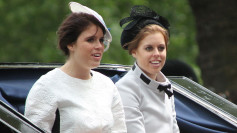In a historic world first, an artificial intelligence (AI) algorithm has successfully co-piloted a military aircraft in what one expert heralds as the beginning of "a new age of human-machine teaming and algorithmic competition."
This history-making feat was accomplished by an AI algorithm given the codename "ARTUµ" (pronounced R-2, as in R2-D2 from Star Wars), which assisted a human pilot of a Lockheed U-2S Dragon Lady high-altitude reconnaissance aircraft.
ARTUµ took charge of the sensor controls after takeoff, said an announcement from the U.S. Air Force. The human pilot, with the codename "Maj. Vudu," and the AI shared data to execute their operation, said Air Force officials.
Both the plane and pilot are from the 9th Reconnaissance Wing (9 RW), based at Beale Air Force Base in California. The historic flight took place on December 15 but was revealed only on Friday.
The mission of 9 RW is to organize, train and equip the Air Force's fleet of U-2 Dragon Lady spy planes and Northrop Grumman RQ-4 Global Hawk high-altitude, long-endurance aerial drones for peacetime intelligence gathering, conventional warfighting, and emergency war order support.
The Air Force said ARTUµ's training included "half-million computer-simulated training iterations." Researchers from Air Combat Command's U-2 Federal Laboratory created and trained the AI.
The Air Force has been experimenting for years with AI systems that can train pilots. Officials said the ARTUµ AI was made to be "easily transferable to other systems" with its open-source architecture design.
"ARTUµ's groundbreaking flight culminates our three-year journey to becoming a digital force," said Dr. Will Roper, assistant secretary of the Air Force for acquisition, technology and logistics.
"Putting AI safely in command of a U.S. military system for the first time ushers in a new age of human-machine teaming and algorithmic competition. Failing to realize AI's full potential will mean ceding decision advantage to our adversaries."
Roper revealed the Air Force modified the "world-leading µZero gaming algorithms to operate the U-2's radar."
Incorporated into ARTUµ was an adaptation of the µZero gaming program, an online algorithm that's outsmarted human players in games like Chess and Go.
"Like any pilot, Artuµ ... has strengths and weaknesses," noted Roper. "Understanding them to prep both humans and AI for a new era of algorithmic warfare is our next imperative step. We either become sci-fi or become history."
Roper believes this is the first use of an AI assistant on board any military aircraft.
"We know that in order to fight and win in a future conflict with a peer adversary, we must have a decisive digital advantage," said Chief of Staff Gen. Charles "CQ" Brown.
"AI will play a critical role in achieving that edge, so I'm incredibly proud of what the team accomplished. We must accelerate change and that only happens when our airmen push the limits of what we thought was possible," he said.






